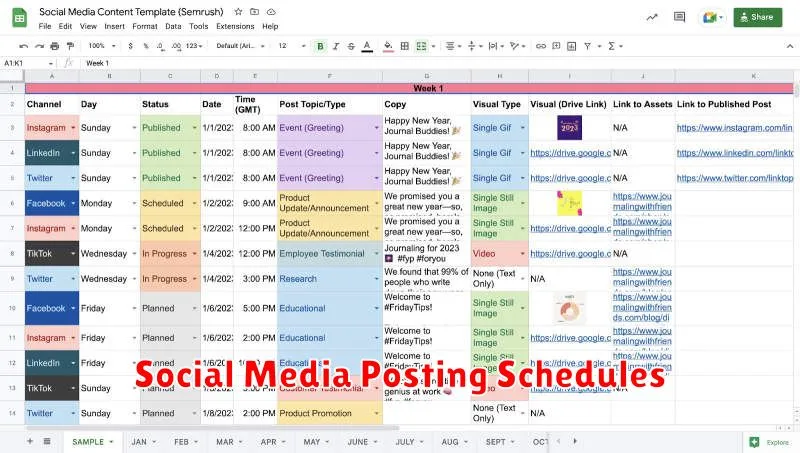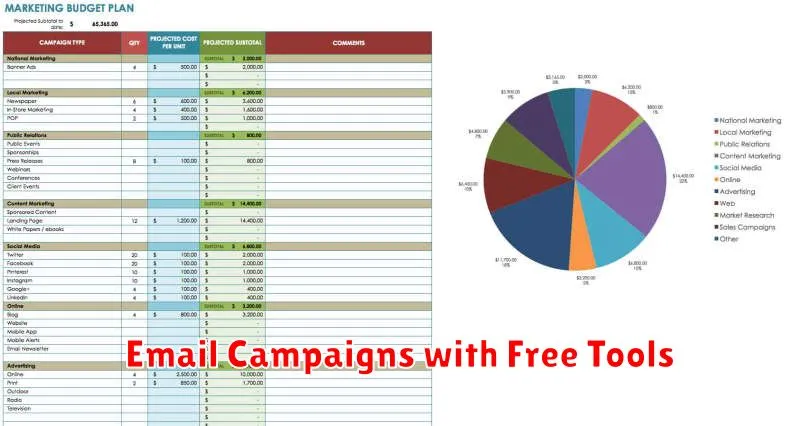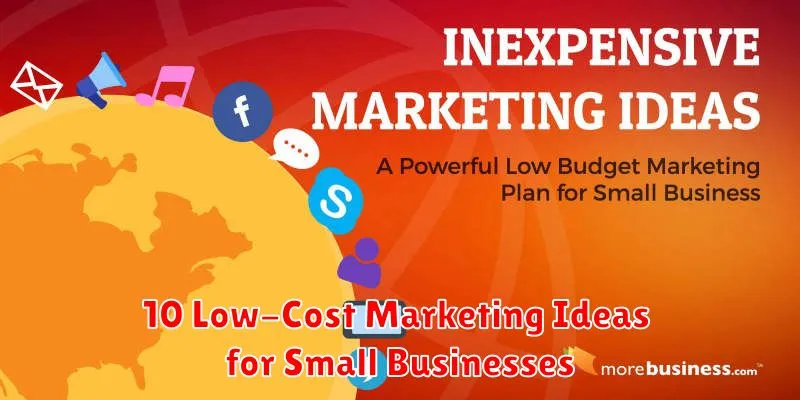Are you a small business owner looking for effective yet affordable marketing strategies? Do you need to reach more customers without breaking the bank? In today’s competitive market, low-cost marketing is essential for small businesses to thrive. This article will provide you with ten low-cost marketing ideas that can significantly impact your business growth. Learn how to maximize your marketing return on investment (ROI) with minimal financial investment. Discover strategies to boost your brand visibility, attract new customers, and cultivate lasting customer relationships. Whether you’re just starting or looking to revamp your current marketing efforts, these affordable marketing solutions are designed to help your business flourish.
From leveraging the power of social media to implementing email marketing campaigns and exploring local networking opportunities, the following low-cost marketing strategies offer practical and actionable steps for small businesses of all sizes. Discover how to create engaging content that resonates with your target audience and builds a loyal customer base. Explore innovative yet budget-friendly marketing techniques that can help you stand out from the competition. Learn how to harness the power of word-of-mouth marketing and transform satisfied customers into brand advocates. This article will equip you with the knowledge and tools to implement effective and affordable marketing plans that drive measurable results.
Why Budget Marketing Works
Budget marketing, also known as cost-effective marketing, focuses on maximizing results with minimal financial investment. It’s a crucial strategy for small businesses, startups, and organizations with limited resources.
Reaching the Right Audience: Budget marketing often relies on highly targeted strategies. Instead of broad, expensive campaigns, the focus is on identifying and engaging specific customer segments likely to convert. This precision minimizes wasted ad spend and improves return on investment (ROI).
Encouraging Creativity and Resourcefulness: Limited budgets necessitate innovative thinking. This can lead to unique, memorable campaigns that stand out from the competition. Thinking outside the box often results in more effective, engaging content.
Building a Strong Foundation: Starting with a budget-conscious approach forces businesses to analyze their target audience, value proposition, and marketing channels effectively. This builds a strong marketing foundation for future, larger-scale campaigns.
How to Prioritize Low-Cost Efforts
With limited resources, small businesses must carefully select their marketing activities. Prioritizing low-cost efforts requires a strategic approach. Focus on activities that deliver the greatest impact for the lowest investment.
Begin by identifying your target audience. Understanding their needs and preferences will guide your choices. Then, analyze your current marketing activities. Which ones are generating the most leads or sales? Which are underperforming?
Next, consider the potential ROI of each low-cost tactic. Some strategies, like social media marketing, may require more time investment but offer greater reach. Others, like email marketing, can be highly effective for nurturing existing customer relationships.
Finally, establish clear goals and track your results. Regularly assess the effectiveness of your chosen strategies and be prepared to adjust your approach as needed. This data-driven approach ensures you’re maximizing your resources and getting the most out of your low-cost marketing efforts.
Social Media Posting Schedules

A consistent social media presence is crucial for small businesses. Creating a posting schedule helps maintain this consistency without requiring constant attention.
Determine optimal posting times. Experiment with different posting times to see when your audience is most active. Analytics dashboards within most social media platforms offer insights into audience activity.
Utilize scheduling tools. Several free and paid tools exist that allow you to create and schedule posts in advance. This frees up your time to focus on other business aspects. Examples include Buffer, Hootsuite, and Later. Even the built-in scheduling features of platforms like Facebook can be effective.
Develop a content calendar. Plan your content in advance, organizing posts by topic, theme, or promotional campaign. This ensures a diverse and engaging feed for your followers.
Email Campaigns with Free Tools

Email marketing remains a powerful and cost-effective way to connect with customers. Fortunately, several free tools can help small businesses get started.
Services like Mailchimp or Sender offer free plans that include basic email templates, subscriber management, and campaign tracking. These tools allow you to create professional-looking emails, segment your audience, and monitor key metrics such as open and click-through rates.
Crafting compelling subject lines and valuable content is essential for successful email campaigns. Consider offering exclusive discounts, sharing helpful tips related to your industry, or providing updates on new products and services.
Remember to comply with email marketing regulations like GDPR and CAN-SPAM. Ensure you have proper consent from recipients and include an unsubscribe option in every email.
Networking at Local Events

Local events offer invaluable opportunities to connect with potential customers and other businesses in your community. These events can range from town fairs and festivals to business expos and industry-specific conferences.
Participating actively allows you to build relationships, increase brand awareness, and generate leads. Prepare a concise elevator pitch about your business and bring plenty of business cards.
Don’t be afraid to initiate conversations. Ask questions and listen attentively. Follow up with new contacts after the event to solidify the connection.
Consider sponsoring or hosting a small event yourself. This can increase your visibility and establish you as a community leader.
Partnering with Local Influencers
Influencer marketing can be a highly effective, yet low-cost strategy, especially when partnering with micro-influencers in your local community. These individuals often have a dedicated and engaged following who trust their recommendations.
Consider reaching out to influencers whose audience aligns with your target demographic. Collaborations could include sponsored posts, product reviews, or event appearances. Negotiate a fair compensation structure, perhaps offering free products or services in exchange for promotion.
This approach allows you to tap into an established audience and gain credibility within your local market, driving brand awareness and potentially increasing sales, all while keeping marketing costs manageable.
Referral Programs for Existing Customers

Leverage the power of word-of-mouth marketing by implementing a referral program. Referral programs encourage your current satisfied customers to recommend your business to their network.
Offer incentives for successful referrals. These could include discounts, free products, or exclusive access to new offerings. The key is to offer something valuable to both the referrer and the new customer.
Track the success of your referral program to measure its effectiveness. Monitor the number of referrals, the conversion rate, and the overall ROI. This data will help you refine your program and maximize its impact.
Promote your referral program actively. Make sure your existing customers are aware of the program and understand how it works. Include information about the program in your email newsletters, on your website, and through social media.
Community Sponsorships
Sponsoring local events or initiatives is a cost-effective way to increase brand visibility and build goodwill within your community. Rather than large-scale sponsorships, consider focusing on smaller, niche events that align with your target audience.
Examples include sponsoring a local little league team, a charity run, a school fair, or a community theater production. These types of sponsorships often require a smaller financial commitment than larger events, while still offering valuable exposure to your target demographic.
Benefits of community sponsorships often include signage at the event, mentions in event programs or announcements, and opportunities for on-site engagement with potential customers.
Consider offering value-added services related to your business as part of your sponsorship. For example, a bakery could donate baked goods for a bake sale at a school fundraiser, or a fitness studio could offer free introductory classes as a raffle prize.
Search Engine Optimization (SEO)
Search engine optimization (SEO) is the practice of enhancing your website to improve its visibility on search engines like Google. Higher rankings mean more organic (non-paid) traffic to your site.
Keyword research is crucial. Identify the terms your potential customers use when searching for products or services like yours. Integrate these keywords naturally into your website content, including page titles, descriptions, and body text.
On-page optimization focuses on elements within your website. This includes optimizing title tags, meta descriptions, header tags (H1-H6), and image alt text. Ensure your website is mobile-friendly and loads quickly.
Off-page optimization involves building your website’s authority through external signals. While more complex, tactics like earning backlinks from reputable websites can significantly impact your search rankings. Focus on creating high-quality content that others will want to share.
DIY Design with Canva or Similar Tools
Creating professional-looking marketing materials doesn’t have to require expensive design software or hiring a graphic designer. User-friendly platforms like Canva offer intuitive interfaces and a wealth of pre-designed templates for various needs.
From social media graphics and brochures to presentations and website banners, Canva provides the tools to design compelling visuals. Utilize their drag-and-drop features, stock photos, and font library to customize templates or create original designs.
Similar tools such as Adobe Express and Crello offer comparable features and functionalities. These platforms empower small businesses to maintain brand consistency and create visually appealing marketing content cost-effectively.

